Norwegian Fjords Weather - What To Expect From Each Season
Our Kayaking Norway Fjords trip is a great summer adventure here!
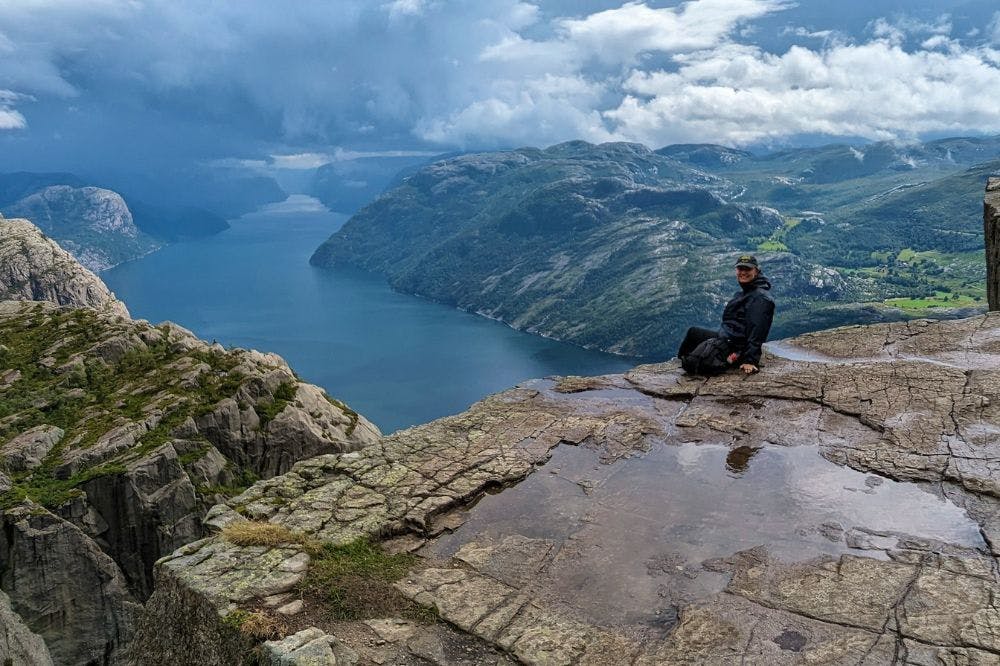
Regional Weather Differences in Norway
Southern Norway (Sørlandet)
Western Norway (Vestlandet)
Northern Norway (Nord-Norge)
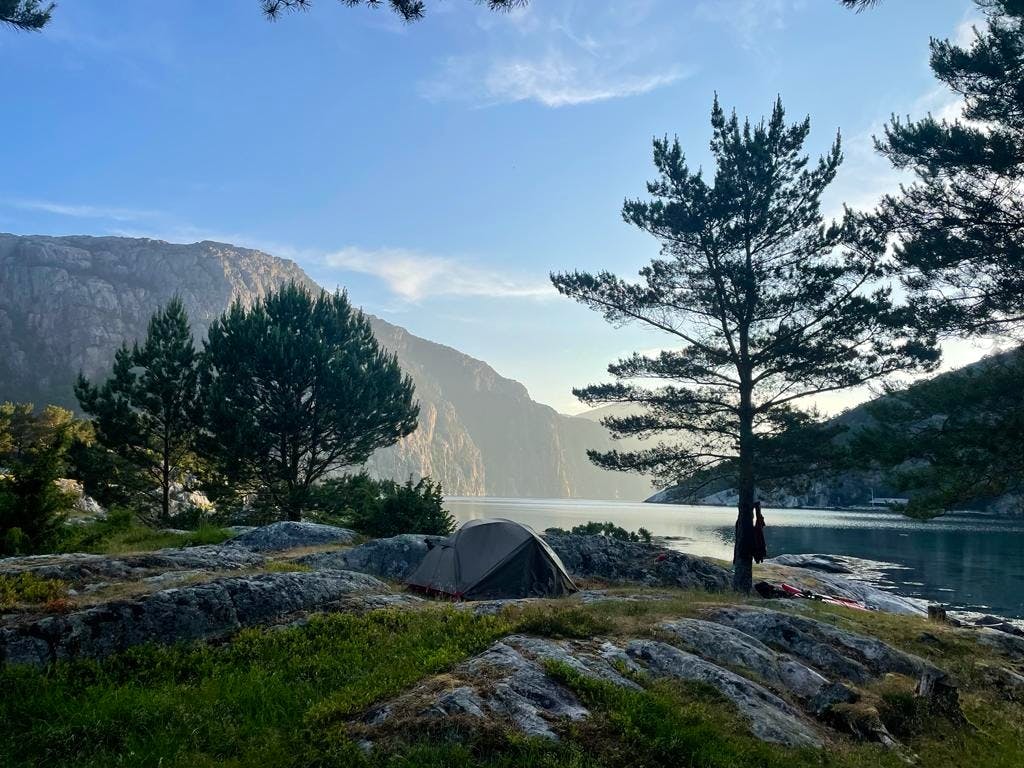
Eastern Norway (Østlandet)
Central Norway (Trøndelag)
Inland Norway (Innlandet)
Mountainous Areas
Fjord Region
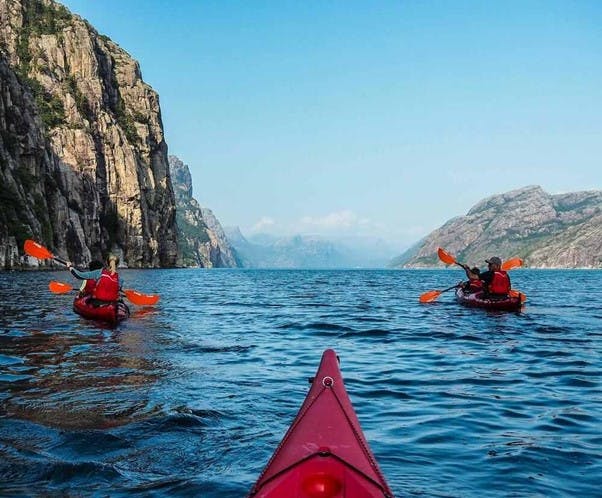
Norwegian Fjords Weather: Season By Season
Spring in the Norwegian Fjords (March to May)
Weather Conditions
Temperature: Spring temperatures in the fjords typically range from 2°C to 12°C (36°F to 54°F), gradually warming as the season progresses.
Precipitation: Rain is common in spring, so expect occasional showers. Snowmelt from the mountains can lead to rising water levels in the fjords. This also means there are plenty of spectacular Norway fjords waterfalls to see during this season.
What to Expect
Landscape: Spring is a beautiful time to visit the fjords as the surrounding mountains still retain a snowy backdrop, while the valleys start to turn green with new growth. The days start getting longer, and you can expect some clear skies.
Activities: Spring is perfect for hiking in Norway fjords as the trails become accessible after the winter snow melts. It's also a great time for photography, with the fjords' beauty enhanced by blooming wildflowers.
Wildlife: Spring marks the return of migratory birds and the chance to see marine life like seals and porpoises. There is plenty of wildlife in Norway fjords to be seen, and spring marks the best time to see it.


Summer in the Norwegian Fjords (June to August)
Weather Conditions
Temperature: Summer temperatures range from 12°C to 20°C (54°F to 68°F) on average. Some days can be even warmer, especially in the southern fjords.
Precipitation: Summers are relatively dry, with occasional rain showers. However, the weather can be unpredictable. While you’ll be able to enjoy long sunny days in summer, there will probably still be plenty of rain mixed in too.
What to Expect
Landscape: Summer offers a stunning spectacle of lush greenery, blooming flowers, and sparkling fjord waters. The snow at higher elevations begins to recede. This makes summer Norwegian fjords weather the most appealing for most visitors, as the landscape opens up a wider range of activities.
Activities: Summer is ideal for outdoor adventures like going to fish in Norway fjords, taking a kayak tour, and going on a boat trip. Hiking is at its best with clear trails and comfortable temperatures. This is when the Norwegian fjords really start to come alive. Whether you want to do the Pulpit Rock hike, enjoy some kayaking in Norway fjords, or even do some Norwegian fjords camping, summer is hands-down the best time to do it. In fact, many hiking trails are only open during the summer months.
Cultural Events: Many fjord towns host festivals and cultural events during the summer months, providing travellers with what to do in the Norwegian fjords to immerse themselves in local traditions. As this is the busiest time of year for people visiting Norway, there’s always a lot going on.
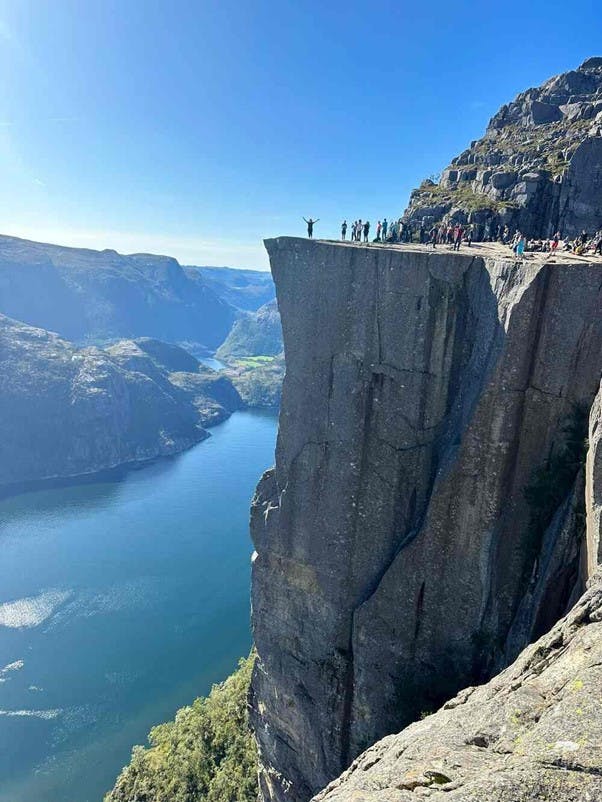
Autumn in the Norwegian Fjords (September to November)
Weather Conditions
Temperature: Autumn temperatures range from 8°C to 15°C (46°F to 59°F) in September, gradually cooling as the season progresses.
Precipitation: Rainfall increases in the later part of autumn, and you may even witness the first snowfall in higher elevations.
What to Expect
Landscape: Autumn paints the fjords with vibrant red, orange, and golden foliage, creating a breathtaking scene. The shorter days also mean you can witness stunning sunrises and sunsets.
Activities: This season is ideal for peaceful hikes and nature walks, as well as scenic drives to capture the fall colours in the Fjord region. The Norwegian fjords weather in autumn still allows for plenty of outdoor fun, like the best places to visit in Norway for hiking and kayaking, but without all of the crowds. Of course, you should expect shorter, colder, wetter days, but this won’t necessarily stop you from getting outside and experiencing the fjords in all their beauty.
Fjord Cruises: Many Fjord cruises still operate in autumn, offering a unique perspective on the changing landscape. If you’re interested in seeing the fjords from a unique perspective, then a cruise is definitely something to consider.
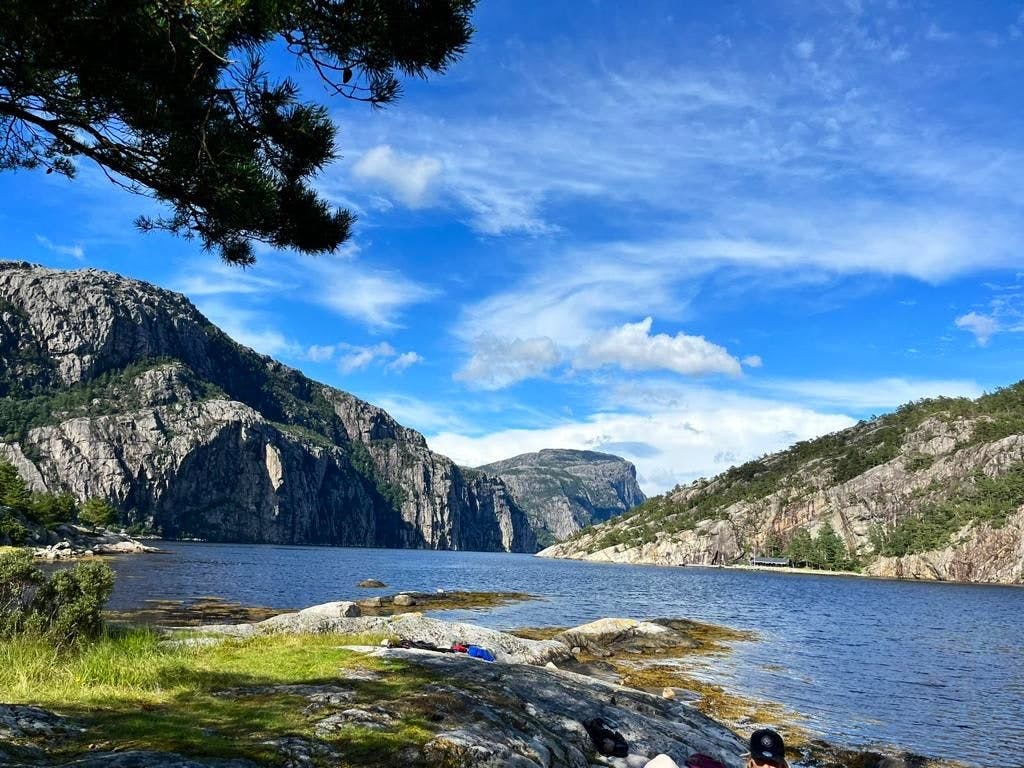
Winter in the Norwegian Fjords (December to February)
Weather Conditions
Temperature: Winter temperatures range from -5°C to 3°C (23°F to 37°F) on average, with colder temperatures in the northern fjords.
Precipitation: Snowfall is common, turning the fjord region into a winter wonderland. Frozen fjords are a possibility in some areas.
What to Expect
Landscape: The fjords under a blanket of snow create a pristine and tranquil atmosphere. Winter offers a unique opportunity for photography and Northern Lights viewing. The only downside is that the grey and cloudy skies often limit your views of the fjords.
Activities: Winter activities include cruising, sightseeing, and ice fishing in certain fjord areas. You won’t be hiking or camping during this time, but if you can brave the cold, there’s still plenty of fun to be had outdoors during winter with our complete ice climbing guide.
Cosy Atmosphere: Winter is perfect for experiencing the cosiness of Norwegian cabins and enjoying traditional dishes by the fireplace. If you’re interested in slowing down and simply relaxing amongst the dramatic fjord landscapes, then winter is an ideal time to do it.

Conclusion
Find your next adventure
Why Skyhook?
Join over 27,000 Skyhook adventurers who've used our platform to book directly with our vetted local guides, at local prices (we never markup).
Expert Local Guides
Experienced local guides, handpicked by us.
Best Prices
Never pay a markup on the local guide's price.
Exclusive Club
Earn loyalty rewards every time you travel.
Great Social Vibes
Small group tours provide a richer experience.
Stellar Feedback
Over 3,000 reviews, average of 4.9/5 stars.








